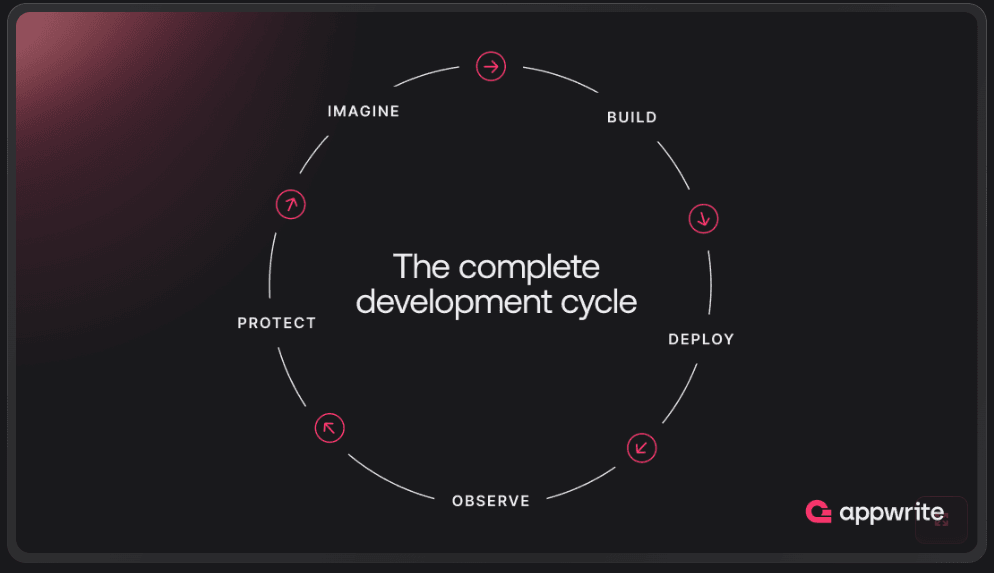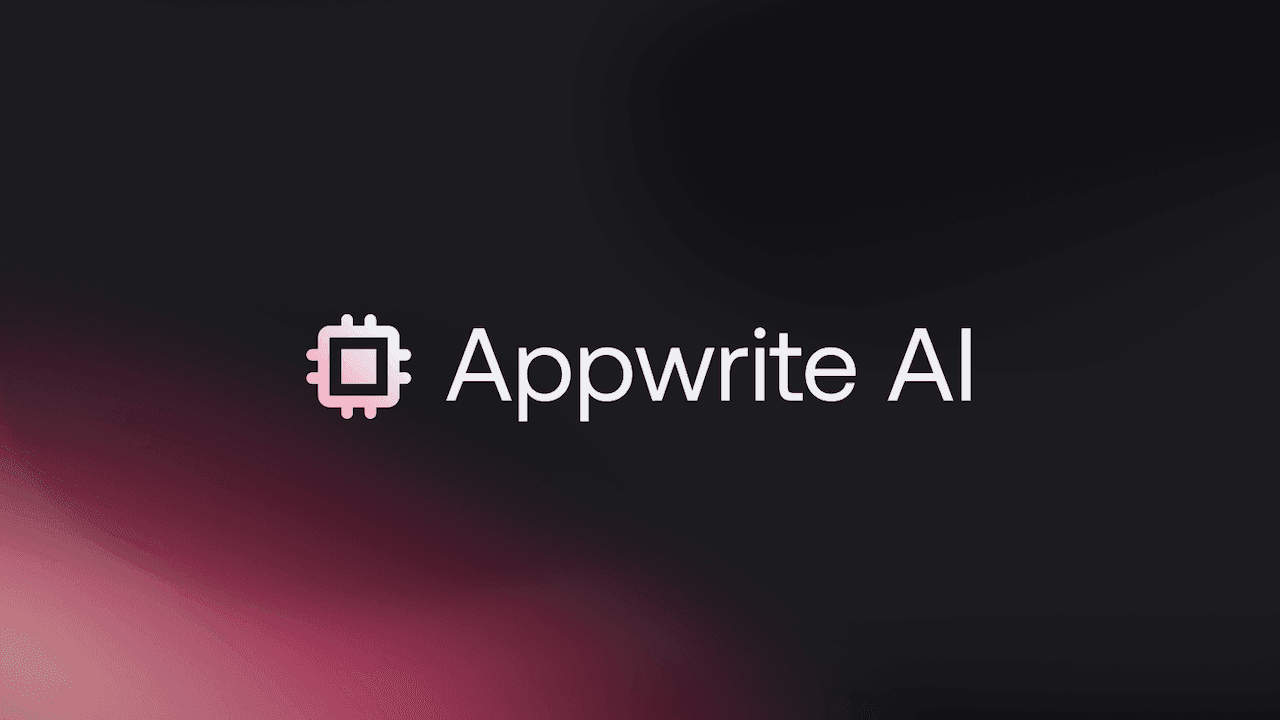Beyond BaaS: Appwrite's Developers' Cloud The Single Platform for the Entire Product Lifecycle
- Author
- Published on
Modern software development moves fast, but the workflow behind it is still fragmented and chaotic. Developers finish the build phase quickly, yet weeks are lost in deployment, monitoring, security, and scaling. Most teams end up stitching together separate tools one for backend, another for frontend hosting, another for logs, and another for security.
This fragmentation creates unnecessary cognitive overhead, slows down delivery, and raises operational cost.
Appwrite’s newly introduced Developers’ Cloud directly addresses this pain. It represents a major shift from Appwrite’s roots as a Backend-as-a-Service (BaaS) toward a full, unified lifecycle platform supporting how modern teams Imagine, Build, Deploy, Observe, and Protect applications.
As a software agency, Devkind sees the value of such unification every day. This platform enables us to ship projects faster, simplify handovers, and reduce long-term maintenance for our clients.
Appwrite has evolved from a traditional BaaS into a full lifecycle platform. The Developers’ Cloud now supports every stage of the product lifecycle with one integrated system.
With the addition of Appwrite Sites, teams can now deploy frontend frameworks directly through Appwrite removing the need for platforms like Vercel or Netlify.
Appwrite’s 5 Lifecycle Pillars
Appwrite organizes its cloud into five powerful pillars:
- Imagine
- Build
- Deploy
- Observe
- Protect
This provides a single platform for planning, development, deployment, monitoring, and securing applications.
Focus on Appwrite Sites The Immediate Win

Appwrite is now an open-source alternative to Vercel and Netlify.
With the release of Appwrite Sites, developers can host and deploy frontend applications directly on the same platform that handles their backend services.
Supported frameworks include:
- Next.js
- React
- Vue
- SvelteKit
- Astro
- Static sites and more
For Client Handoffs
For agencies, this eliminates the biggest pain points:
- No environment-variable mismatches
- No separate dashboards for hosting
- No dependency on third-party CI/CD tools
- No configuration drift during handoff
This drastically reduces maintenance cost and ensures seamless client delivery.
Emphasize the Full Lifecycle Model

Appwrite structures the development lifecycle into four primary pillars (with Imagine as the planning stage)
| Appwrite Pillar | Developer & Agency Benefit |
|---|---|
| Imagine | Provides a structured way for teams to conceptualize and plan applications before development begins. Ensures clarity, reduces rework, and aligns all stakeholders. |
| Build (Auth, DB, Functions) | Speed and productivity in developing backend logic. Reduces custom backend boilerplate. |
| Deploy (Appwrite Sites) | Unified backend + frontend hosting. Removes complexity from pipeline setup. |
| Observe | Built-in logs and monitoring. Eliminates the need for separate services like Sentry or external log analyzers. Faster debugging. |
| Protect | Security best practices built directly into the platform. Ensures consistent and safe deployments. |
For Devkind, this means one consistent architecture across projects, fewer third-party dependencies, and improved long-term reliability for clients.
Address AI Integration The Future-Proof Angle

Appwrite is preparing developers for AI-native applications with:
- A built-in Vector Store
- Better support for RAG workflows
- Seamless integration with Appwrite Functions and Realtime
- Infrastructure for agent-based applications
Why This Matters
Developers and agencies building AI-powered applications need reliable vector search, realtime processing, and serverless logic.
Instead of piecing together:
- Pinecone
- OpenAI embedding pipelines
- Custom vector indexing
- External messaging services
Appwrite will provide the core AI primitives in one unified cloud.
The Bottom Line
The Developers' Cloud is designed as a direct answer to the complexity and inefficiency that currently plagues software development agencies. By collapsing the typical fragmented infrastructure overhead into a single, cohesive, open-source platform, Appwrite facilitates a fundamental evolution for the development community. For Devkind, this shift translates into three significant, measurable benefits: Faster Time-to-Market, as development teams spend drastically less time configuring infrastructure and more time focusing on client features; a Lower Total Cost of Ownership (TCO) for Clients, since a single, unified platform is inherently cheaper and simpler to maintain over the long term than five stitched-together services; and finally, Consistency, ensuring every client project is built upon the same reliable, transparent, and open-source foundation, thereby simplifying agency operations and future scalability.
Frequently Asked Questions
Don't just read.
Let's work together. Build smarter.
Recent Blog Posts
AI Agents and Google Workspace Flows: The Future of No-Code Automation is Here
AI agents inside Google Workspace are flipping automation on its head. With Google Workspace Flows powered by Gemini, teams can build intelligent, no-code workflows that reason, analyze, and execute multi-step tasks across Gmail, Sheets, Drive, and more.
Amazon Web Services Quick Suite:AI-Powered Insights and Automation.
Amazon Web Services (AWS) just dropped Quick Suite, an AI-powered workspace that fuses business intelligence, generative AI, and no-code automation. It’s built to help teams instantly turn insights into action, all inside one smart, connected ecosystem.
Google Unveils VEO-3: Next-Gen AI Video Model
Google's Veo 3.1, an optimized upgrade to its flagship AI video model, has been released via the Flow AI filmmaking platform. Veo 3.1 strategically positions itself as a professional-grade tool against OpenAI's Sora 2 by focusing on an extended runtime of up to 60 seconds and a breakthrough Spatio-Temporal Audio Coupling Algorithm for native audio synchronization.